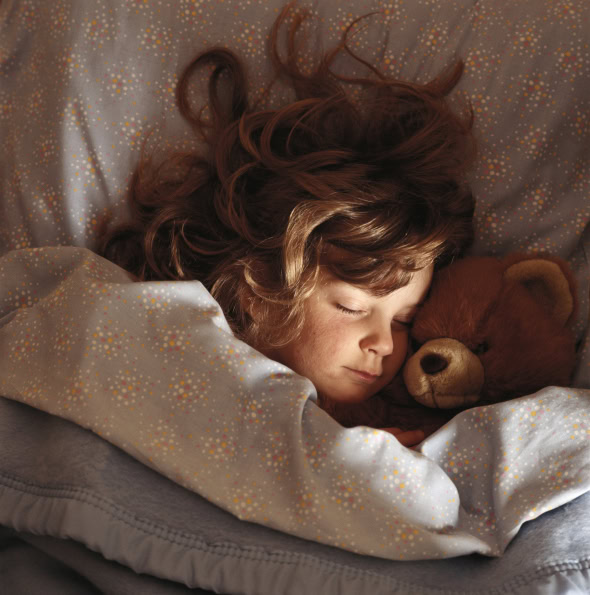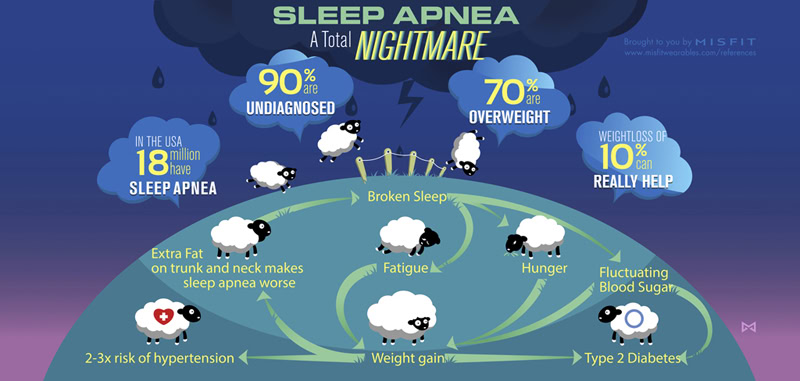
If your child with diabetes sleeps restlessly or snores at night, it may be a good idea to have him or her checked for sleep apnea. It can make a difference in their health, as poor sleep quality is directly linked to elevated blood glucose levels and many other complications. If left undiagnosed, sleep apnea can have a wide-ranging impact on diabetic kids, including problems with good glucose control, a tendency to put on weight or a general “failure to thrive.”
A 2012 University of Arizona study of 50 children with Type 1 diabetes found a direct connection between less restful sleep and daytime fluctuations in blood glucose levels among those studied. Those with sleep apnea also had much higher blood sugar levels overall, the study concluded.
Dr. Michelle Perfect, the lead investigator, believes there’s a strong connection between blood sugar fluctuations and sleep quality. Writing in the academic journal Sleep, Dr. Perfect observed that “despite adhering to recommendations for good diabetic health, many youth with type 1 diabetes have difficulty maintaining control of their blood sugars…We found that it could be due to abnormalities in sleep, such as daytime sleepiness, lighter sleep and sleep apnea. All of these make it more difficult to have good blood sugar control.”
Unfortunately, an estimated 80% to 90% of sleep apnea cases aren’t diagnosed. That’s too bad because, unlike diabetes, sleep apnea can be cured, or at least controlled, quite effectively once diagnosed.
Sleep and Diet: the Connection
Sleep, particularly deep sleep, restores and repairs mind and body, prompting organs to secrete hormones that regulate mood, growth and blood glucose, among other things. Experts say most adults require around eight hours of sleep per night, and children from 11 to 14 hours. Although many high-achievers are famous for foregoing sleep to get things done, shortchanging on a good night’s rest can hurt physical health. Reduced energy levels can result in higher levels of stress hormones, less desire to exercise, and a tendency to eat a less healthy diet.
Sleep deprivation can create a vicious circle with food. The less you sleep, the more caffeine you may end up using to stay awake. Too often, that caffeine comes with a healthy dose of sugar. Too little deep sleep also decreases production of the leptin protein, which helps to control appetite. The less you sleep, the hungrier you may be.

What’s Keeping Them Up?
The Center For Disease Control reports that 40 million Americans have sleep disorders, and about half of them suffer from some form of sleep apnea. Obstructive sleep apnea (OSA), one of the most common forms of sleep apnea, is a condition in which breathing actually stops frequently, although not enough to fully awaken sleepers. The frequent stops and starts in breathing keep those affected in a lighter stage of sleep that doesn’t replenish the body as well as deep sleep.
OSA is usually caused by a physical barrier, such as relaxed throat tissue, that temporarily blocks airways. It can be treated by a doctor-prescribed breathing machine and mask that fits over the nose and mouth while in bed. The device keeps the airways open and allows for longer periods of deep sleep. As inconvenient as it sounds, users of the therapy adapt fairly quickly to the machine, and they usually quickly see dramatic improvements in quality of life with it.
What To Watch For
Parents already burdened by caring for kids with diabetes might well see a condition like sleep apnea as a back-breaking straw, but there is some good news.
First, not all kids who sleep restlessly or snore have sleep apnea. Usually an overnight test at a sleep center is needed to determine the presence or absence of the condition. At-home tests, such as those developed by Watermark Medical (www.watermarkmedical.com), also may be allowed for some children. Consult your doctor or diabetes specialist to learn more.
Second, it’s easy enough for a parent who frequently gets up in the middle of the night to check a child’s blood glucose levels to observe the following:
- difficulty breathing;
- pauses in breathing;
- snoring;
- restless sleep;
- heavy sweating;
- nightmares/night terrors;
- bedwetting
Any combination of these symptoms are worth a call to your child’s healthcare provider to at least begin a conversation about the possibility of sleep apnea. This is certainly one instance where an ounce of prevention is worth a pound of cure. The sooner sleep apnea gets diagnosed in children, the more likely it becomes that it will not continue or cause long-term complications related to diabetes, such as heart disease, hypertension or kidney problems.
Thanks for reading this Insulin Nation article. Want more Type 1 news? Subscribe here.
Have Type 2 diabetes or know someone who does? Try Type 2 Nation, our sister publication.